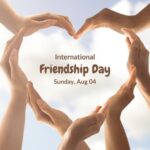🌐 World Population Day: History, Significance, Facts & Why It Matters More Than Ever
With over 8 billion people sharing this planet, it’s clear that population is more than just a number—it’s a global issue touching everything from food security to climate change. World Population Day, observed every July 11, brings much-needed attention to the challenges and opportunities that come with a growing human family.
- 📌 What is World Population Day?
- 🕰️ History and Origin of World Population Day
- 📅 Timeline of Global Population Milestones
- 🌐 9 Alarming & Eye-Opening Facts About World Population
- 🎯 Significance of World Population Day
- 🎤 How is World Population Day Observed?
- 💬 Wishes & Messages for World Population Day
- 🤔 Frequently Asked Questions (FAQs)
- Q1. Why is World Population Day important?
- Q2. Who celebrates World Population Day?
- Q3. What is the theme for World Population Day 2025?
- Q4. How can individuals contribute?
- 🧭 Key Points and Takeaways
- 🏡 Importance in Daily Life and Society
- 🔚 Conclusion: Why World Population Day is a Wake-Up Call
In this article, we dive deep into the history, timeline, facts, FAQs, observance, and significance of this essential international observance. You’ll also discover why it’s critical to our daily lives and how you can raise awareness in a meaningful way.
📌 What is World Population Day?
World Population Day is an annual global event dedicated to focusing attention on the urgency and importance of population issues, including family planning, reproductive health, gender equality, poverty, and sustainable development.
Date Observed: July 11
Established by: United Nations Development Programme (UNDP)
First Observed: 1989
Purpose: To raise awareness about global population trends and their impact on society and nature.
“The power of population is indefinitely greater than the power in the earth to produce subsistence for man.” — Thomas Malthus
🕰️ History and Origin of World Population Day
The Spark: Five Billion Day
On July 11, 1987, the world’s population officially reached 5 billion. This milestone marked a turning point in human history and caught the attention of global leaders, activists, and environmentalists.
Birth of World Population Day
In 1989, inspired by the awareness created by “Five Billion Day,” the Governing Council of the UNDP established World Population Day to focus on population-related issues such as:
The balance between population and resources
The health and rights of women and families
Sustainable development and quality of life
Since then, every year on July 11, governments, NGOs, academics, and individuals reflect on population-related concerns.
📅 Timeline of Global Population Milestones
| Year | Event |
|---|---|
| 1804 | Global population reaches 1 billion |
| 1927 | Hits 2 billion |
| 1960 | 3 billion mark crossed |
| 1987 | 5 Billion Day — spark for World Population Day |
| 1999 | 6 billion milestone |
| 2011 | Population hits 7 billion |
| 2022 | Crosses 8 billion |
| 2025* | Expected to reach 8.5 billion (UN forecast) |
🌐 9 Alarming & Eye-Opening Facts About World Population
🌍 Over 90% of global population growth occurs in developing countries, placing stress on limited resources.
👶 India and China collectively account for over 36% of the world’s population.
🚼 Over 218 million women in developing nations still lack access to modern family planning.
🌱 The Earth’s population grows by about 80 million every year.
📈 Nigeria is projected to be the third-most populous country by 2050.
💧 Nearly 1 in 3 people don’t have access to safe drinking water due to overpopulation and poor infrastructure.
🧒 More than 1 billion people are aged 10–24, making the youth population the largest ever.
🌿 Urban areas are expanding at a rate of 3 million people per week, leading to overpopulation in cities.
🌡️ Overpopulation contributes significantly to climate change, resource depletion, and biodiversity loss.
🎯 Significance of World Population Day
World Population Day isn’t just about counting people—it’s about understanding how we live, how we grow, and how we can sustain ourselves and our planet.
🌟 Key Objectives:
Promote family planning awareness
Support maternal and reproductive health
Fight gender inequality
Address issues of poverty and overpopulation
Empower youth education and employment
Encourage sustainable resource use
It’s a reminder that people are both the problem and the solution to many of the world’s challenges.
🎤 How is World Population Day Observed?
World Population Day is marked by events across countries, including:
Seminars & Webinars by governments and NGOs
Health campaigns focusing on family planning and contraception
Educational programs in schools and colleges
Media awareness drives through television, social media, and newspapers
Community outreach to provide reproductive health services
💬 Wishes & Messages for World Population Day
Sending thoughtful wishes can create awareness and motivation. Here are some messages:
“A balanced population leads to a balanced world. Happy World Population Day!”
“Let’s empower women, educate youth, and plan families. The future depends on it.”
“On this World Population Day, let’s think smartly about the way we grow.”
“Population is not just a number—it’s people, lives, and possibilities. Let’s nurture wisely.”
“Smaller families, stronger societies. Happy World Population Day 2025!”
🤔 Frequently Asked Questions (FAQs)
Q1. Why is World Population Day important?
A: It helps raise awareness about critical issues like overpopulation, family planning, reproductive health, and the environmental impacts of population growth.
Q2. Who celebrates World Population Day?
A: Governments, NGOs, schools, universities, global organizations (especially the UN), and concerned individuals worldwide.
Q3. What is the theme for World Population Day 2025?
A: Themes vary yearly. The UN usually announces a specific focus such as gender equality, youth, or family planning. (We can update this when the 2025 theme is officially released.)
Q4. How can individuals contribute?
A: Spread awareness on social media, support NGOs working in population health, educate others about family planning and sustainability.
🧭 Key Points and Takeaways
World Population Day = July 11, inspired by “Five Billion Day.”
Addressing population issues is crucial for sustainable development.
Key concerns include: reproductive health, urban crowding, food, water, environment, and equality.
Population issues are global, local, and personal.
Empowering women and educating youth are central to population control.
🏡 Importance in Daily Life and Society
Whether we realize it or not, population trends directly affect our daily lives:
Traffic congestion and housing shortages are often tied to urban population booms.
Unemployment and poverty can stem from more job-seekers than jobs.
Healthcare systems are overwhelmed in overpopulated areas.
Climate change is aggravated by excessive consumption linked to large populations.
Education quality can decline with too many students per classroom.
In short, more people = more pressure on everything — air, water, space, food, and even peace.
But it’s not all doom. With planning, innovation, and awareness, we can turn our growing numbers into our greatest strength.
🔚 Conclusion: Why World Population Day is a Wake-Up Call
World Population Day is not just a UN calendar date—it’s a reminder that the future of humanity is in our hands. While the numbers may seem intimidating, they also represent opportunities to educate, innovate, and collaborate.
From reproductive rights to youth empowerment, from sustainability to gender equality, the key lies in responsible action.
As we move toward 9 billion and beyond, let’s ensure that every individual is valued, supported, and heard.
Let’s not just grow in number — let’s grow in wisdom, compassion, and sustainability.








